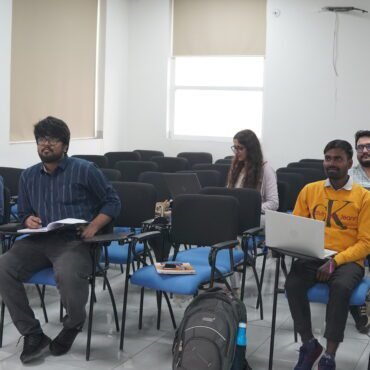Social Media Forensics: Investigating Crimes on Facebook, Instagram, and WhatsApp
In the digital age, social media platforms have become an integral part of daily communication, business, and entertainment. However, with this widespread usage comes a new avenue for cybercrime, harassment, identity theft, and fraud. As a result, social media forensics has emerged as a crucial branch of digital forensics focused on collecting, analyzing, and preserving data from social networks for legal investigations.
This blog explores how social media platforms like Facebook, Instagram, and WhatsApp are investigated during forensic cases, how data is extracted and examined, and what kind of evidence is legally acceptable in court.
What is Social Media Forensics?
Social media forensics involves the process of identifying, collecting, preserving, and analyzing data from social networking platforms. This digital evidence can be used in criminal investigations, civil litigation, internal corporate cases, or cybersecurity incidents. The aim is to reveal information related to:
-
Online harassment or threats
-
Identity theft and impersonation
-
Financial fraud and scams
-
Leaked confidential information
-
Evidence of criminal intent
Key Platforms in Social Media Forensics
1. Facebook
-
Posts, comments, and likes
-
Friend lists and message history
-
Group and page interactions
-
Timeline activities and check-ins
-
Metadata such as timestamps and IP addresses
2. Instagram
-
Photo and video posts
-
Story archives
-
Direct messages (DMs)
-
Location tagging
-
Follower/following data
3. WhatsApp
-
Chat conversations
-
Voice and video calls
-
Media files (images, videos, audio)
-
Group messages
-
Deleted messages (if recoverable)
How Social Media Data is Collected
-
Legal Requests to Platforms
-
Manual Collection
-
Forensic Tools
-
Tools like X1 Social Discovery, Belkasoft, Magnet AXIOM, and Cellebrite collect and preserve data systematically.
-
Cloud-Based Extraction
-
Browser Artifacts
Analyzing Social Media Evidence
After collection, forensic experts analyze:
-
Message timelines to establish event chronology
-
User interactions to determine intent or collusion
-
Deleted or edited content to understand cover-up attempts
-
Geolocation metadata to verify presence or absence at specific places
-
Multimedia analysis to detect deepfakes or manipulated media
Legal Considerations in Social Media Forensics
-
Authentication:
-
Chain of Custody:
-
Privacy & Consent:
-
Admissibility in Court:
Real-World Applications of Social Media Forensics
-
Cyberbullying and harassment investigations
-
Employee misconduct or data leaks
-
Tracking terrorist or criminal activity via group chats
-
Uncovering scams or fake identity profiles
-
Domestic disputes and child custody cases using chat and media evidence
Challenges in Social Media Forensics
-
Data encryption (especially on WhatsApp)
-
Content deletion or auto-disappearing messages
-
Jurisdictional barriers (platforms hosted overseas)
-
Metadata manipulation and fake profiles
-
Changing privacy settings that restrict access
Conclusion
Social media platforms are powerful communication tools, but they are also frequently exploited for criminal purposes. Through proper forensic techniques and legal protocols, investigators can uncover crucial digital evidence hidden in chats, posts, and shared media.
With platforms like Facebook, Instagram, and WhatsApp being central to modern communication, social media forensics is now an indispensable part of digital investigations. Whether for law enforcement, private investigations, or cybersecurity, mastering this domain is essential for today’s forensic professionals.
If you’re interested in learning practical skills in social media forensics, check out Hawk Eye Forensic’s training programs.





Post comments (0)